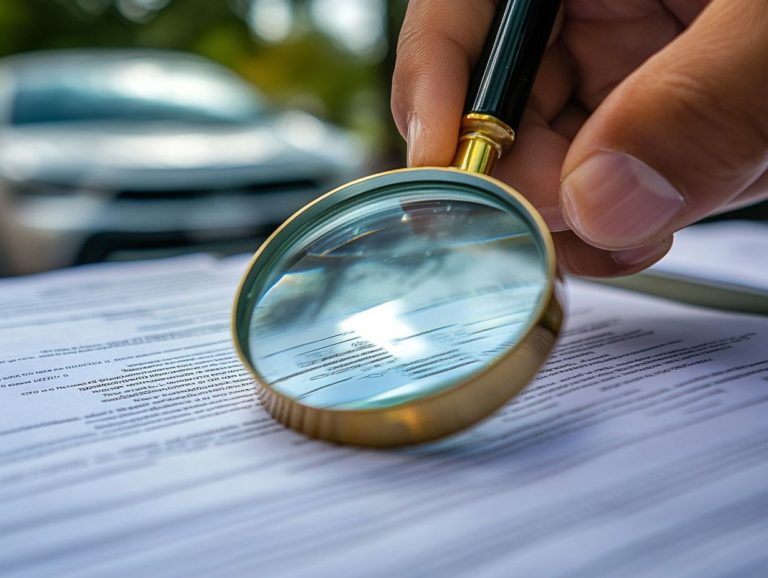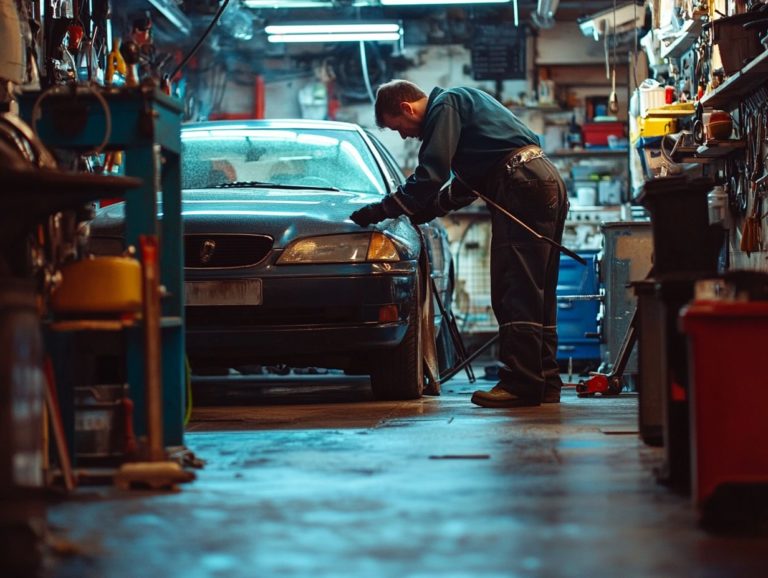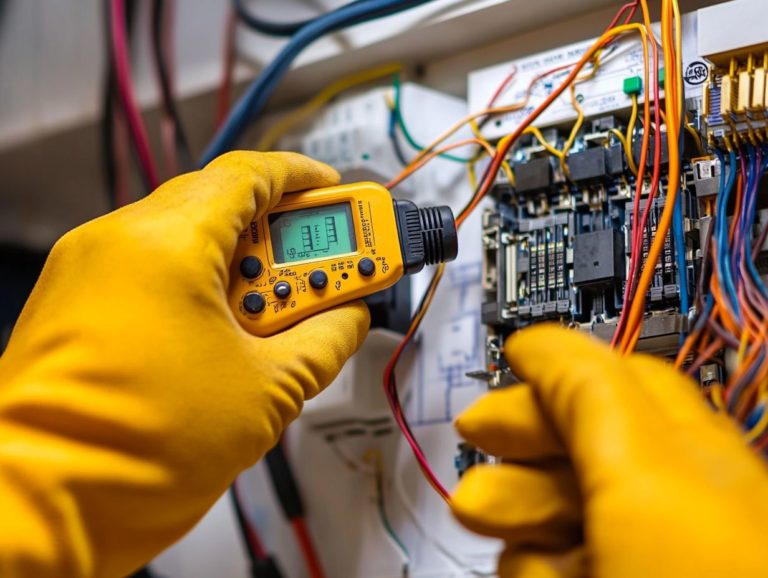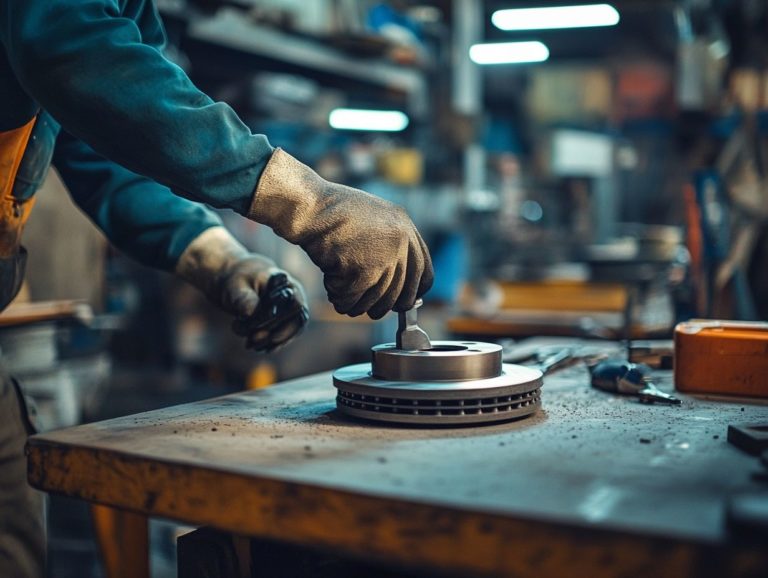5 Quick Fixes for Common Car Issues
Car troubles can be incredibly frustrating, but many common issues are simpler to resolve than you might expect.
This guide walks you through five quick fixes:
- Jump-starting a dead battery
- Changing a flat tire
- Replacing windshield wipers
- Fixing a stuck brake caliper
- Swapping out a headlight bulb
You ll also learn how to identify the most frequent car problems, take preventative measures, and recognize when it s time to seek help from a mechanic.
You will also learn how regular maintenance and DIY solutions can keep your vehicle running smoothly and extend its lifespan.
Let s get your car ready to hit the road!
Contents
Key Takeaways:
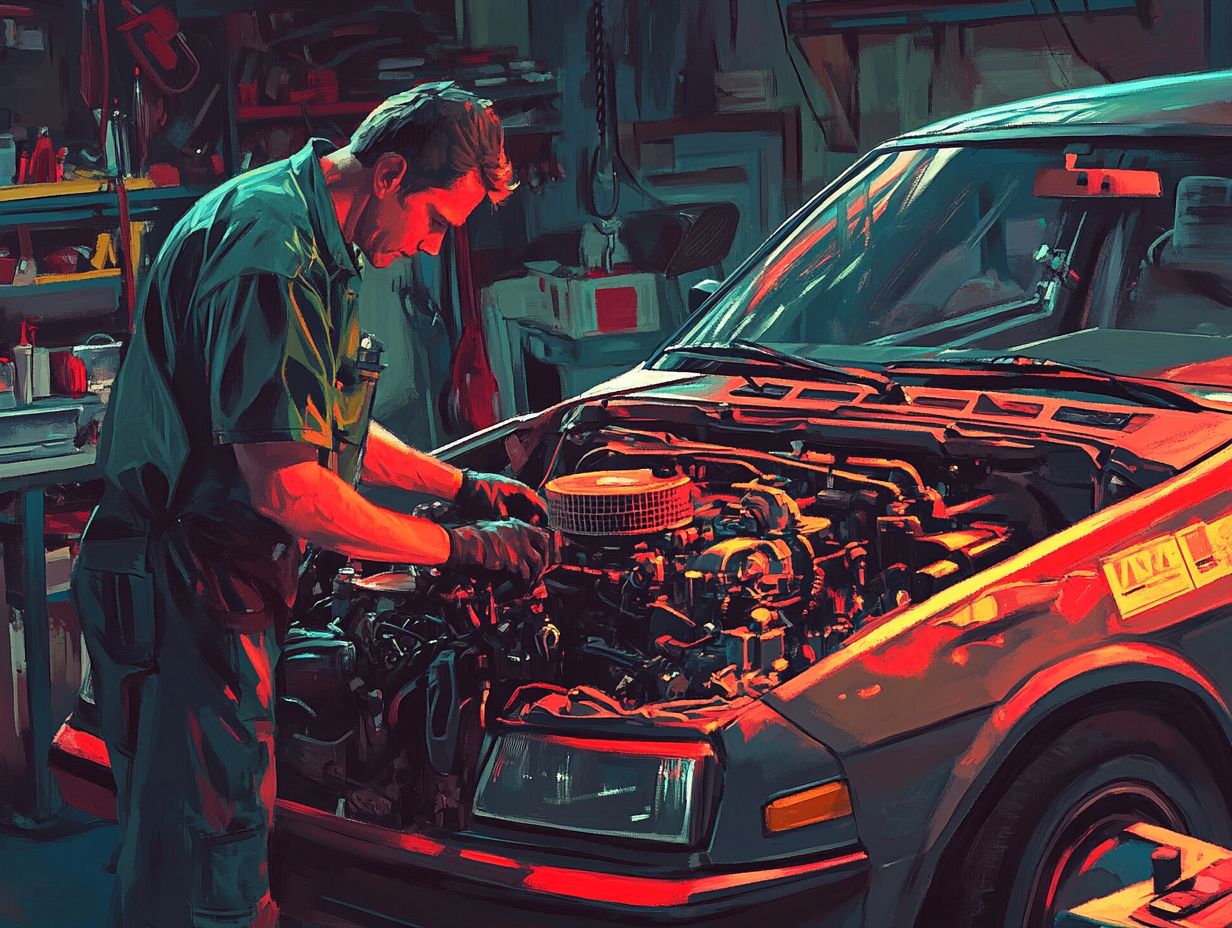
- Don’t panic when your car won’t start – learn how to jump-start a dead battery to get back on the road quickly.
- A flat tire doesn’t have to ruin your day – follow these steps to safely change it.
- Don’t let streaks and smudges obstruct your view – learn how to easily replace your windshield wipers for clearer vision while driving.
1. How to Jump Start a Dead Battery
Jump-starting a dead battery is an important skill for all car owners. It can save you time and money while ensuring your vehicle is back on the road quickly and safely.
First, gather these tools: a set of jumper cables and a portable jump starter, if possible.
Prioritize safety; always wear gloves and goggles to protect yourself from battery acid or any sparks that could fly during the process.
Before connecting any cables, inspect both batteries for visible damage, especially at the terminals. Corroded or loose connections might indicate a more significant issue.
Identifying a dead battery is often straightforward if your vehicle won t start or makes a clicking sound, it might be time to perform a jump start.
If this method doesn t work, it s wise to consult a mechanic, especially if your battery continues to die, as this could signal deeper electrical problems or the need for a battery replacement.
2. How to Change a Flat Tire
Changing a flat tire is an important skill every driver should master. Flat tires can surprise you, and knowing how to handle the situation can save you from being stranded and racking up repair bills.
The process is straightforward: safely lift your vehicle, remove the flat tire, and replace it with a spare. Make sure your spare tire is properly inflated for safe driving.
Equipping yourself with the right tools is crucial; having a jack, lug wrench, and a spare tire that works can truly make a difference in a roadside emergency.
To lift your vehicle safely, ensure it’s on stable ground and engage the parking brake. Once you’ve loosened the lug nuts, carefully raise the car with the jack, being mindful not to exceed its lifting capacity.
After you’ve installed the spare, checking the tire pressure is key. Use a gauge to confirm optimal levels, preventing any future mishaps.
Regular inspections by a qualified mechanic are vital for catching potential issues before they escalate. This extends the lifespan of your tires and ensures a safe and smooth driving experience.
Start practicing these skills today and be ready for anything on the road!
3. How to Replace Windshield Wipers

Replacing your windshield wipers is a straightforward yet essential task. This ensures crystal-clear visibility during bad weather, boosting both your safety and comfort on the road.
Worn-out wipers can leave streaks and diminish visibility, increasing the risk of accidents. By mastering this simple replacement, you not only empower yourself as a driver but also take control of your car maintenance routine, contributing to your vehicle’s overall health.
To get started, gather a couple of basic tools: a flathead screwdriver for prying off the old wipers and a pair of scissors for any necessary trimming.
When selecting new wipers, keep in mind the specific model of your vehicle. Different cars require various sizes and attachment styles. For the best fit, consult your car s owner manual or check the compatibility guide at your local auto parts store.
Regularly inspecting your wipers is essential. Check for cracks or tears in the rubber. If they show wear, it s time to replace them. Aim to check them at least every six months.
By keeping your wipers in peak condition, you avoid visibility issues and sidestep unexpected replacements during harsh weather. Act now to ensure your wipers are in top shape!
4. How to Fix a Stuck Brake Caliper
Fixing a stuck brake caliper is crucial for maintaining your vehicle’s safety, as it directly impacts braking performance. If left unchecked, you could face grinding brakes or even complete brake failure.
The repair typically involves inspecting the entire brake system, cleaning or replacing the caliper, and addressing worn brake pads to restore optimal function. Understanding how to diagnose and fix this common car issue enhances your vehicle’s safety and allows you to take charge of your car s service needs.
Recognizing the signs of a stuck caliper is vital. Keep an eye out for:
- Uneven wear on brake pads
- A pulling sensation when braking
- A burning smell due to overheating
To diagnose the issue, start with a visual inspection of the brake components, then test the caliper’s operation. You ll need a jack, lug wrench, and a tool for calipers for the repair process.
Don t hesitate! Consult a qualified mechanic immediately if symptoms persist. Ongoing issues could signal more significant problems lurking beneath the surface. Implement regular maintenance measures, such as fluid checks and brake inspections, to avoid future caliper troubles and keep your vehicle in peak working condition.
5. How to Replace a Headlight Bulb
Replacing a headlight bulb is vital for car maintenance. It ensures you drive safely at night and in poor visibility, helping to prevent potential accidents. A burnt-out bulb doesn t just leave you in the dark; it can also trigger dashboard warning lights and hint at larger electrical issues.
By learning how to replace a headlight bulb, you enhance your driving safety and take proactive measures in managing your vehicle s upkeep.
First, identify the correct bulb type for your specific make and model. You can usually find this information in the owner s manual or via a quick online search. Equip yourself with the necessary tools like gloves, a screwdriver, and possibly a socket wrench to make the process smoother.
Regularly checking your dashboard lights not only keeps your driving conditions safe but also acts as an early warning system for electrical issues that may require professional attention. Ignoring these signs can lead to more significant repair costs and compromise your vehicle s safety.
What Are the Most Common Car Issues and How to Identify Them?
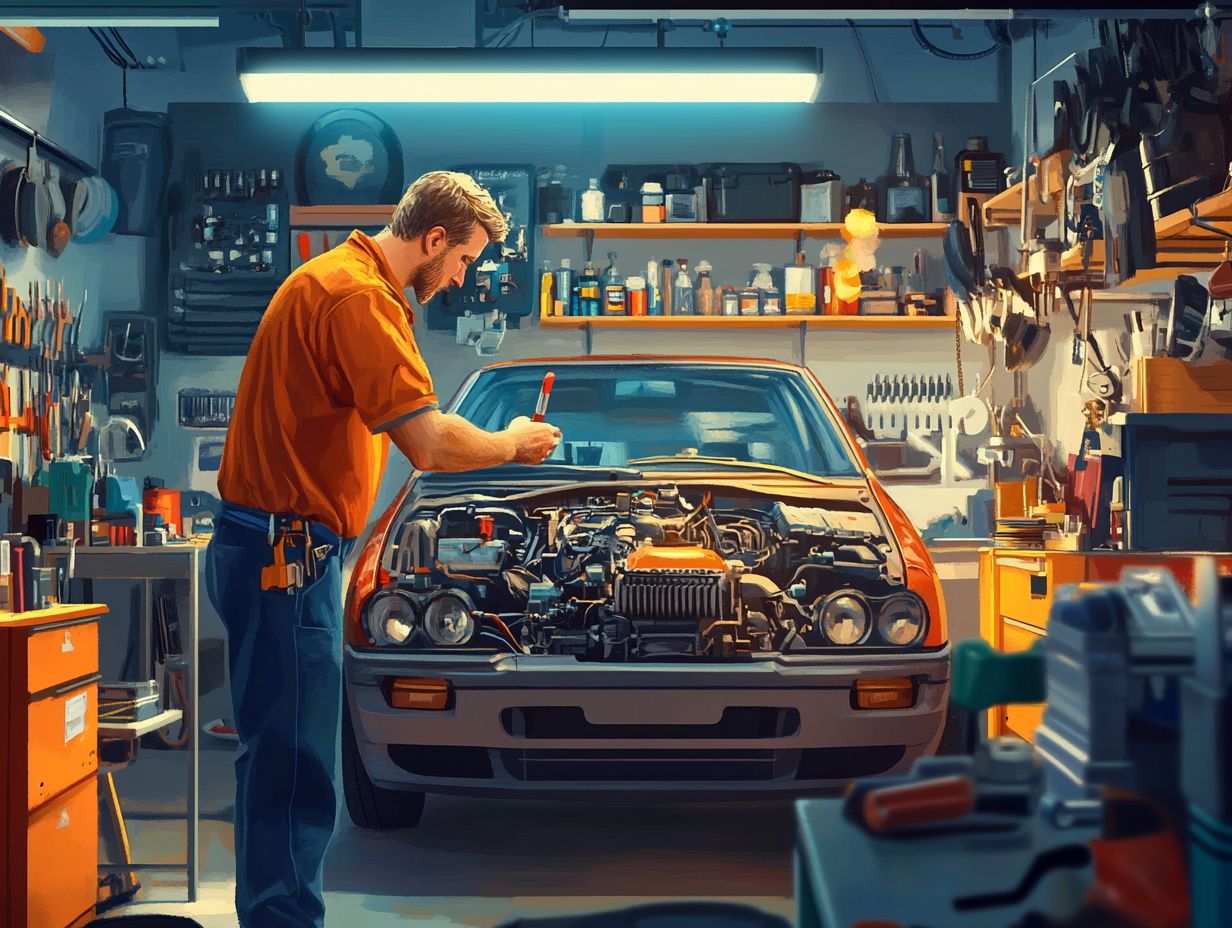
Identifying common electrical issues in cars and fixes is crucial for you as a vehicle owner. Early detection can save you from minor issues snowballing into expensive repairs.
From pesky warning lights on the dashboard, like the check engine light, to unusual sounds and performance hiccups, recognizing the signs of common car issues is crucial. Knowing how to diagnose common car problems enables you to take action promptly.
Regular vehicle inspections focusing on key aspects such as coolant levels (the liquid that helps keep your engine from overheating), oil levels, and potential fuel leaks are essential for maintaining your vehicle’s health and maximizing its longevity.
Stay vigilant about symptoms like decreased fuel efficiency, odd vibrations, or overheating! These could be telltale signs of underlying mechanical issues.
Routine check-ups not only help you catch these problems early but also provide a chance to tackle wear and tear before it escalates.
By prioritizing preventative measures and scheduling inspections regularly, you can cultivate a more reliable driving experience. This ultimately saves time and money while ensuring your safety on the road.
What Are Some Preventative Measures for Common Car Issues?
Implementing preventative measures for common car issues is essential for extending your vehicle’s lifespan. For additional guidance, consider these 5 tips for DIY common car repairs, which ensure reliable performance on the road.
Establishing a regular maintenance schedule keeps your vehicle running smoothly. It also offers peace of mind during your travels.
For example, regularly checking your brake fluid (the fluid that helps your brakes work), replacing air filters, and examining wiper blades can help you address potential problems before they develop into serious concerns.
Recognizing the value of professional vehicle inspections is equally important. These assessments can reveal underlying issues that might not be noticeable to the average driver.
By seeking expert advice periodically, you can prevent minor concerns from escalating into costly repairs. This ultimately leads to a safer and more efficient driving experience.
When Is It Time to Take Your Car to a Mechanic?
Knowing when to take your vehicle to a mechanic is vital for keeping it safe and functioning smoothly. To help you keep your older vehicle in top shape, consider these 5 tips for maintaining older vehicles. Ignoring issues can quickly escalate, leading to serious problems and inflated repair costs.
If you notice persistent grinding from the brakes, warning lights illuminating on the dashboard, or a concerning drop in coolant levels, don t wait! See a mechanic immediately.
Strange smells like burning oil or coolant along with a fluctuating engine temperature gauge, could signal underlying electrical issues or cooling system failures.
Regularly monitoring for these warning signs can greatly enhance your vehicle’s performance and longevity.
Prioritizing safety on the road is essential. Timely repairs not only provide peace of mind but also help you avoid the stress of unexpected breakdowns and their high costs.
Staying vigilant and informed enables you to make wise decisions about your vehicle’s health.
How Can Regular Maintenance Help Avoid Common Car Issues?
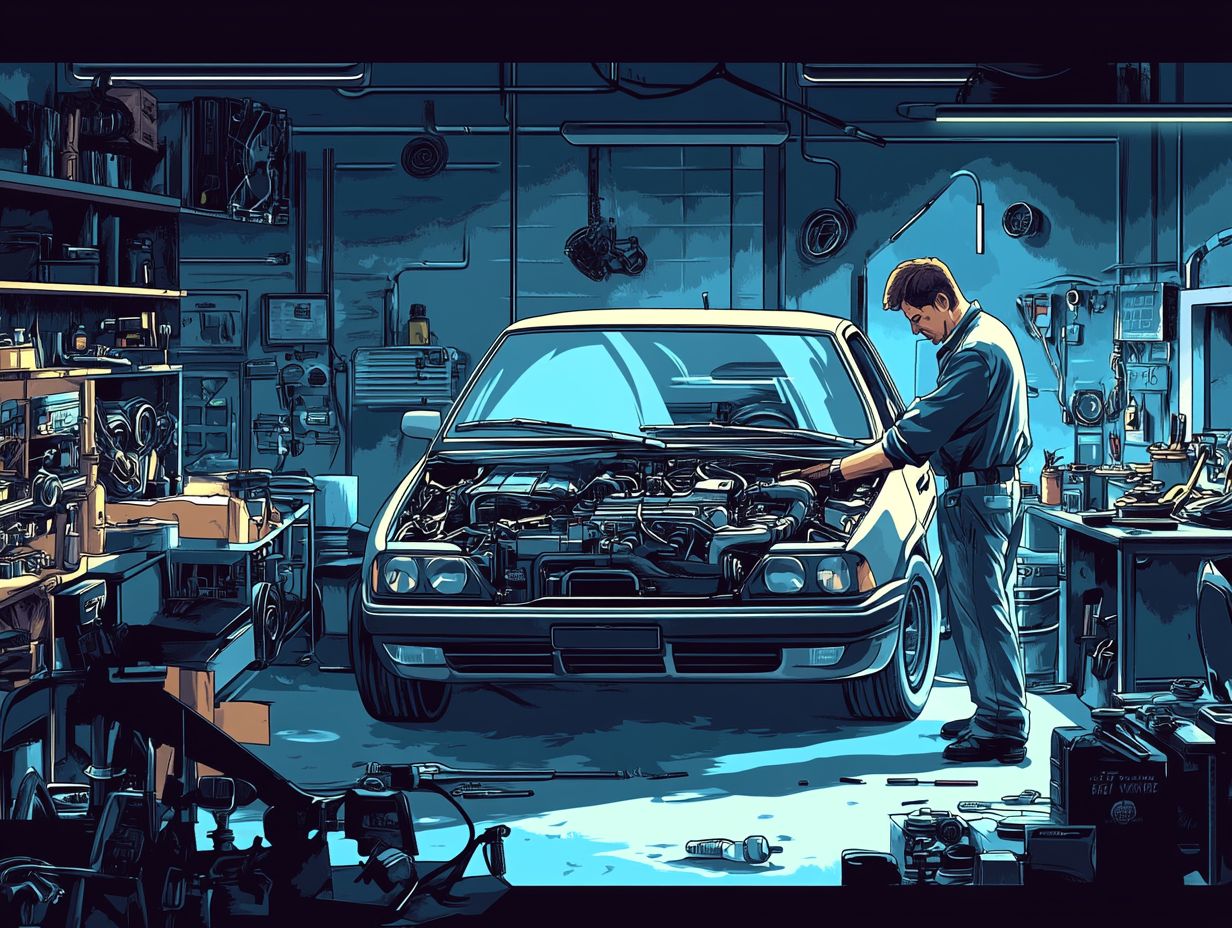
Regular maintenance is crucial to avoid common car issues and recognize warning signs your car needs immediate repair, enhance vehicle performance, and achieve better fuel economy.
By routinely checking essential components like oil and coolant levels, along with consistent inspections, you can catch potential problems before they turn into expensive repairs.
Sticking to a well-planned maintenance schedule allows you to significantly extend your vehicle’s lifespan. Enjoy a smoother, safer driving experience.
For example, regular oil changes keep your engine running smoothly and efficiently, while tire rotations promote even tread wear, improving both traction and handling.
Don’t underestimate the importance of brake inspections they’re vital for your safety. Early detection of wear can prevent potentially dangerous failures.
To create a maintenance schedule tailored to your driving habits, think about how often and how far you drive. Tracking your mileage and keeping a calendar for scheduled checks ensure you never overlook an important task.
This makes it easier to maintain your vehicle in top condition.
What Are Some DIY Solutions for Common Car Issues?
Exploring DIY solutions for common car issues enables you to save money on repairs while deepening your understanding of your car. To avoid unnecessary expenses, consider these 5 tips for avoiding common car repairs. Simple tasks, like replacing a dead battery or addressing minor dents and rust, are manageable with the right tools and guidance.
By learning to tackle these problems yourself, you can enhance your vehicle maintenance skills and relish a sense of accomplishment. Additionally, knowing how to stay prepared for common car repairs ensures your car runs smoothly.
Tackling everyday car challenges can prevent minor annoyances from turning into major headaches. Tasks such as changing oil, rotating tires, or troubleshooting warning lights can often be resolved with a few basic tools from wrenches to screwdrivers, and sometimes even a diagnostic scanner, which is a tool that helps identify car problems. To stay informed about these issues, check out the top 10 most common car repairs you should know. Always prioritize safety by wearing gloves and goggles, and make sure your car is on a stable surface.
If you encounter more complex issues like engine overheating or electrical failures, don’t hesitate to consult a mechanic for professional assistance. Additionally, knowing how to identify common car issues early can be invaluable. Striking the right balance between DIY repairs and professional help guarantees that your vehicle remains well-maintained and reliable.
How Can Proper Car Care Help Extend the Life of Your Vehicle?
Proper car care is crucial for extending the life of your vehicle, significantly lowering the chances of encountering common issues that can lead to expensive repairs. Follow a personalized maintenance schedule that includes regular checks on oil levels, coolant levels, and tire pressure to ensure your vehicle operates at peak performance for years to come.
Committing to thorough car care boosts safety and reliability, helping preserve the overall value of your vehicle.
As the seasons change, understanding your vehicle’s unique needs becomes important. The cold winter months can impact battery performance and tire traction, while hot summer days may require extra attention to coolant levels.
Conducting these seasonal checks allows you to proactively address potential problems. Learning about your vehicle’s specific requirements like changing the air or oil filter and brake inspections can cultivate a deeper connection with your machine, leading to more informed decisions regarding repairs and upgrades.
Frequently Asked Questions
-
What are 5 quick fixes for common car issues?
-
To fix a flat tire:
Locate the spare tire and tools in your car. Remove the flat tire and replace it with the spare using the tools provided. Ensure the spare is properly inflated before driving. -
If your car won’t start:
It could be due to a dead battery. Try jump-starting your car with jumper cables and another vehicle. If that doesn’t work, it could be a faulty starter or alternator; you may need to have your car towed to a mechanic. -
To fix a leaking radiator:
Use a radiator leak sealant. This product can be poured directly into the radiator to seal leaks. If the leak is severe, it’s best to take your car to a mechanic for a proper repair. -
To fix dim headlights:
Check the battery for weakness and replace it if needed. If the issue persists, take your car to a mechanic to have the alternator checked and replaced if necessary. -
If your car overheats:
Pull over to a safe location and turn off the engine. Let the car cool down for at least 30 minutes before opening the hood and checking the coolant level. If it’s low, add more coolant or water. If the issue continues, take your car to a mechanic for further diagnosis.

